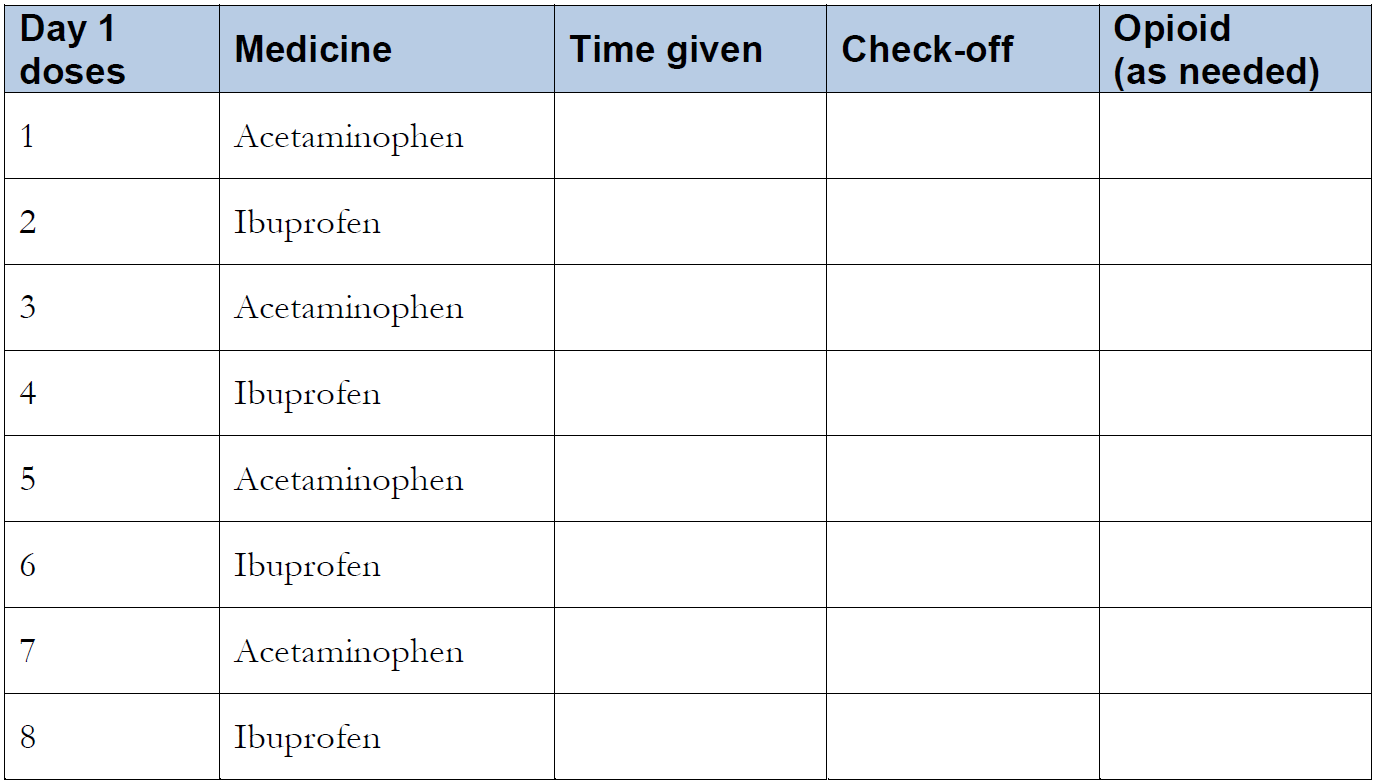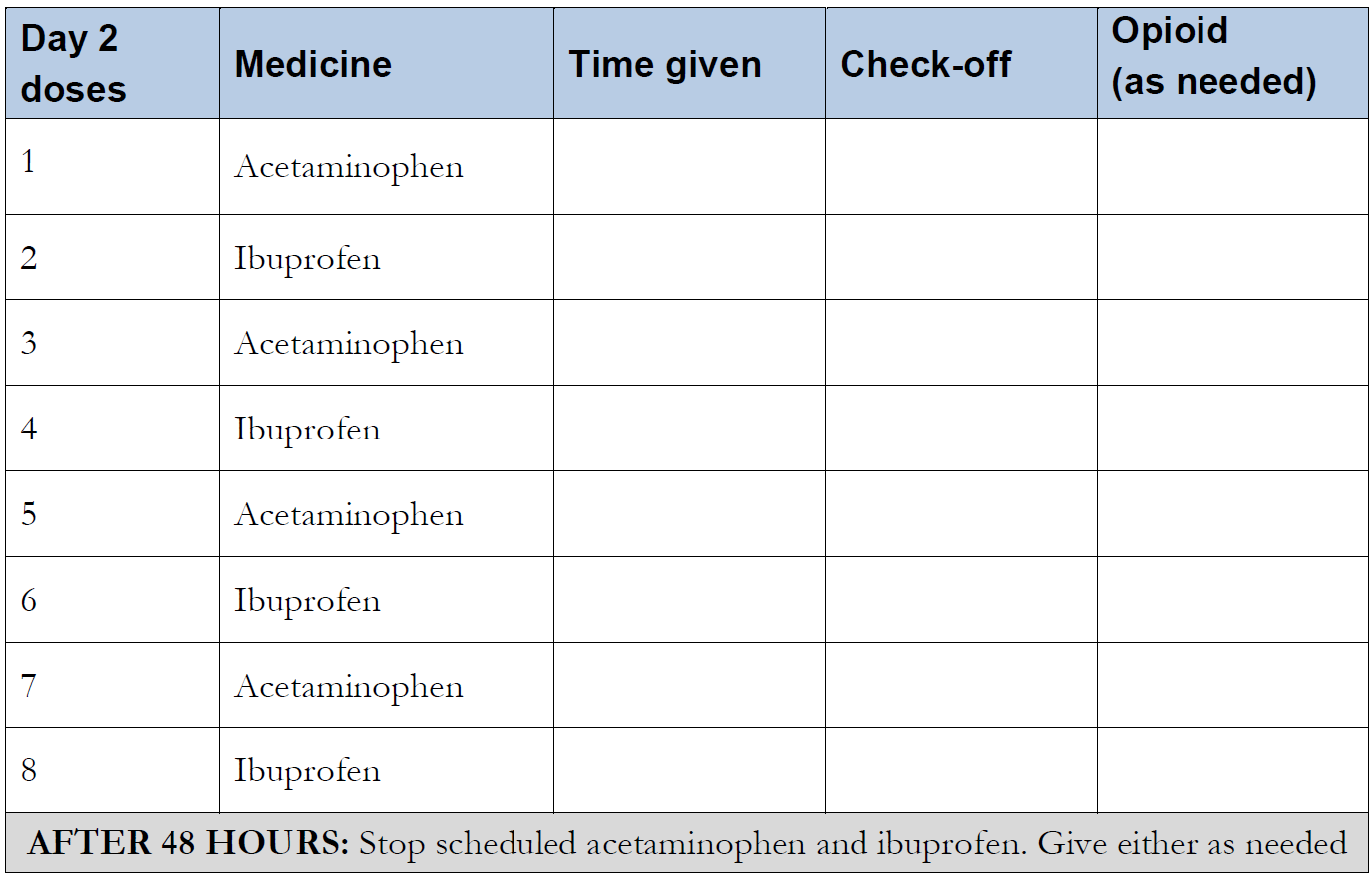Treating Pain After Surgery

Your child may feel some pain after surgery. This is normal. Each child’s pain is different. It is important to know when and how much pain your child has so they can get the best treatment. The health care provider will teach you how to understand your child’s pain and ways you can comfort them.
Pain Scales
Your child’s pain can be measured by numbers or a picture. These are guides called pain scales. They help you and the medical team gauge how much pain your child has. You need to know this when giving pain medicine. Different scales are used for each patient’s age.
- Younger children use smiley faces to rate pain.
- Older children can point to a number to rate their pain. For example, ratings are usually:
- Mild pain = 1 to 3
- Moderate pain = 4 to 6
- Severe pain = 7 to 10
Comfort
There are different ways to comfort your child. Comforting them can ease their pain or help take their mind off it.
- You can distract them from pain by:
- Reading books
- Watching TV
- Blowing bubbles
- Playing games
- Singing
- Give them familiar items from home, like a stuffed animal, blanket, or toy.
- Rub your child’s hands, arms, legs, or head. Ask the health care provider before holding or rocking them.
- Create a calm setting by turning down the lights. It might help to put headphones on your child. They can listen to soft music or soothing sounds. The headphones can also block out unwelcome noises.
- If there is a wound from surgery, try splinting the place of the cut (incision). Splinting is holding a pillow or folded blanket over the wound and gently applying pressure. Your child should use splinting to minimize pain before coughing, deep breathing, and moving.
- Check with your child’s provider before:
- Using massage therapy
- Helping them move to get comfortable
- Putting a warm or cold pad on an area that hurts
Pain Medicine
The health care provider will decide which pain medicine will work best for the surgery your child had. They could get medicines by mouth, feeding tube, or in an IV (a plastic tube put directly into the vein). Once they can swallow liquids without getting sick, they will take medicine by mouth.
- To prevent an upset stomach, your child should take medicine with food when possible.
- Your child may get acetaminophen (Tylenol®) and ibuprofen (Motrin® or Advil®).
- Acetaminophen and ibuprofen will be switched back and forth (alternate) every 3 hours. They should not be taken at the same hour (Picture 1).
- For example, if your child takes acetaminophen at
12 p.m., they will take ibuprofen at 3 p.m., and then acetaminophen again at 6 p.m. - They may also get an opioid medicine, like oxycodone
or hydrocodone. This stronger, prescription pain medicine is usually not taken over a long period of time.- You may give it for pain that is not controlled by acetaminophen or ibuprofen.
- Check to see if the opioid has acetaminophen in it. The opioids Norco®, Lortab®, and Percocet® contain acetaminophen. When taking one of those medicines, do not give your child extra acetaminophen. Give the opioid/acetaminophen combination alone. It is okay to continue alternating with ibuprofen.
- Check how much pain your child has before giving pain medicine. If the pain can be controlled with acetaminophen, give that instead of the opioid.
After Surgery
Your child could have some of these common side effects after surgery are:
- Nausea
- Itching
- Fatigue
- Rash
- Dizziness
- Constipation
- Feeling light-headed
- Tenderness at the surgical site
- Discomfort and body aches
When to Call the Health Care Provider
Call your child’s provider at (phone) __________________________________ if:
- Their pain is not under control or is worse.
- You have any questions or concerns with your child’s pain control.
Acetaminophen and Ibuprofen Directions
- Acetaminophen start time is: _____________. Follow directions on package.
- Ibuprofen start time is: ______________. Follow directions on package.
- Opioid drug name: _____________________________________________.
- Dose: ______ mL (liquid) OR ______ tablet(s) as needed every ______ hours.
Pain Medicine Administration Chart


